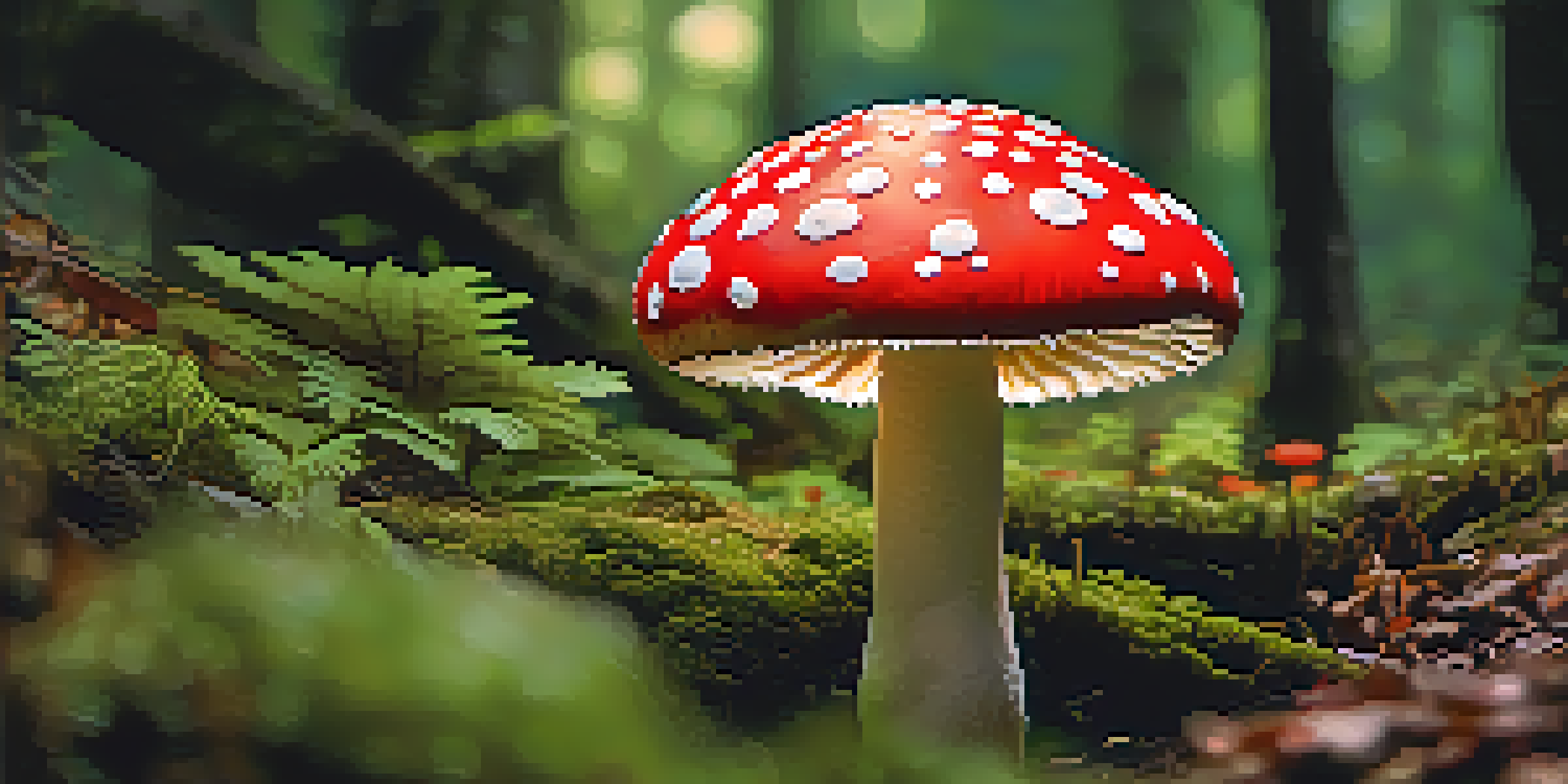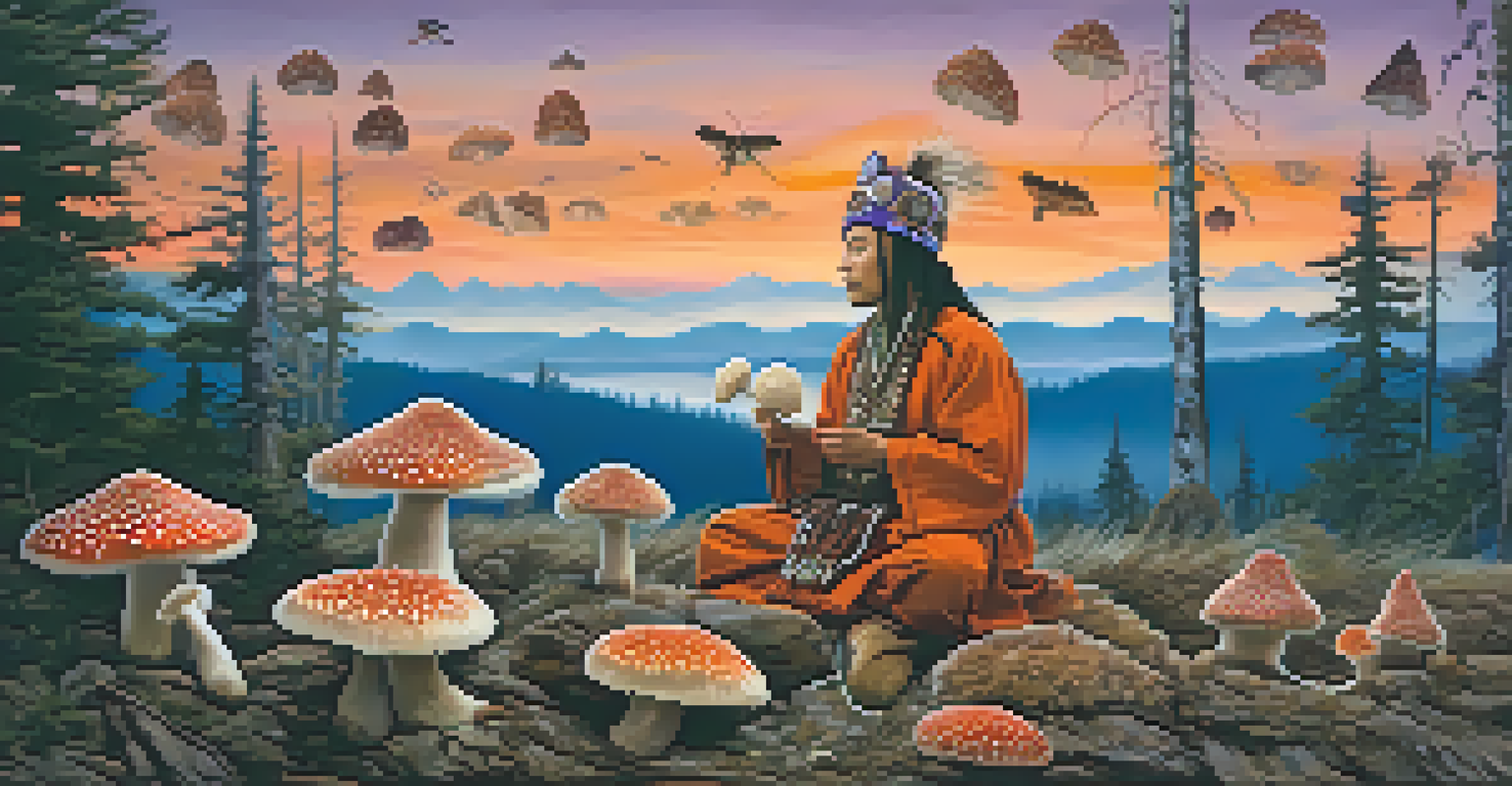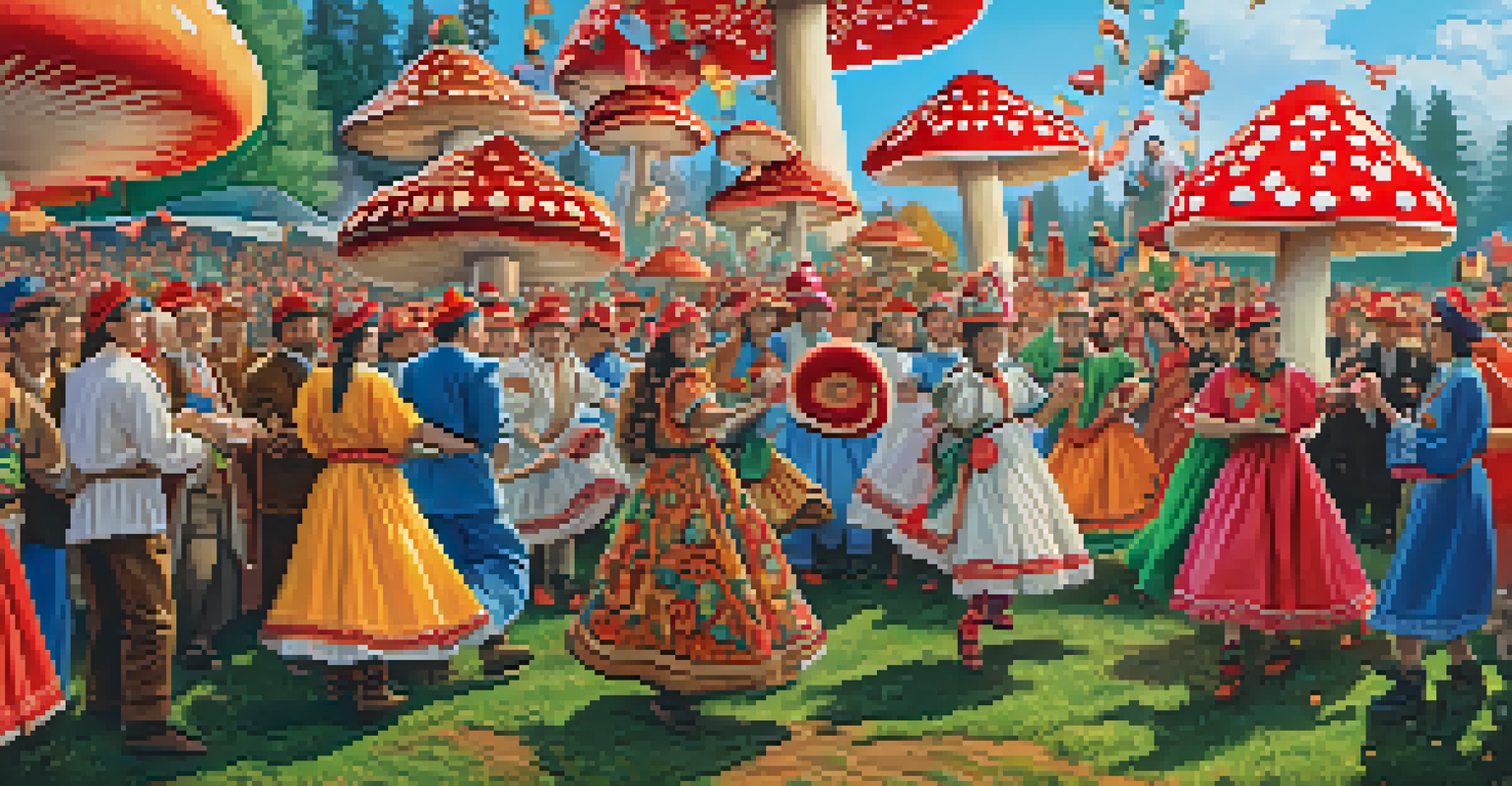Historical Use of Amanita Muscaria in Siberian Cultures

Introduction to Amanita Muscaria in Siberian Cultures
Amanita muscaria, commonly known as the fly agaric mushroom, has a rich history in Siberian cultures. Traditionally recognized for its bright red cap and white spots, this mushroom has captivated the imaginations of many across the globe. In Siberia, it's not just a fascinating fungus but a significant part of spiritual and cultural practices. Understanding its historical context provides insight into how these communities view nature and their relationship with the mystical.
Nature does not hurry, yet everything is accomplished.
Siberian tribes, especially the Shamans, have long considered Amanita muscaria as a conduit to the spirit world. This sacred mushroom was used in rituals aimed at connecting with ancestors and deities, showcasing the deep spiritual roots embedded in these practices. The unique psychoactive properties of the mushroom further enhanced its mystique, leading to its revered status among various indigenous groups. Thus, Amanita muscaria is more than just a mushroom; it is a symbol of spiritual exploration.
As we explore its historical uses, we will uncover the layers of meaning that Amanita muscaria holds for Siberian cultures. From ceremonial use to its impact on folklore, this article seeks to illuminate the profound ways this mushroom has shaped cultural identities. Join us on this journey through time to better understand the significance of Amanita muscaria in the heart of Siberia.
Shamanic Practices and Amanita Muscaria
In Siberian shamanism, the use of Amanita muscaria is deeply intertwined with spiritual practices. Shamans often consume the mushroom during rituals to enter altered states of consciousness, believing it allows them to communicate with spirits and gain insights. This practice is not merely for recreational purposes; it is a sacred act aimed at healing and guidance within the community. The mushroom serves as a bridge between the physical and spiritual realms.

The rituals typically involve preparation and consumption methods that have been passed down through generations. Shamans would often dry the mushrooms or prepare them in specific ways to enhance their psychoactive effects. This careful preparation is critical, as the mushroom has varying potency depending on its form and environmental conditions. The art of using Amanita muscaria is thus not just about consumption but about respect for its powers.
Amanita Muscaria in Spirituality
Amanita muscaria is revered in Siberian cultures as a sacred tool for shamanic rituals, facilitating connections with the spirit world.
These shamanic practices reflect a profound understanding of nature and its elements. The reverence for Amanita muscaria illustrates a broader philosophy where humans and nature coexist harmoniously. By examining these traditions, we gain a deeper appreciation for the wisdom of Siberian cultures and their intricate relationship with the natural world.
Cultural Significance of Amanita Muscaria
Beyond its use in shamanic practices, Amanita muscaria holds significant cultural meaning for various Siberian tribes. It often appears in folklore, stories, and art, symbolizing the mystical connection between humans and nature. In some tales, it is depicted as a gift from the gods, bestowing wisdom and insight upon those who dare to partake. This cultural narrative reinforces the mushroom's sacred status in the hearts of the people.
The earth has music for those who listen.
Moreover, Amanita muscaria is associated with various festivals and celebrations, marking the changing seasons and community gatherings. These events allow tribes to come together, reinforcing social bonds while honoring their traditions. The presence of the mushroom at these festivities adds a layer of spirituality, elevating the communal experience. Such gatherings showcase the importance of collective memory and shared cultural heritage.
The cultural significance of Amanita muscaria transcends mere usage; it embodies the values, beliefs, and identity of Siberian communities. Through storytelling and shared experiences, the mushroom becomes a symbol of unity and continuity. Understanding its role in cultural practices helps us grasp the richness of Siberian traditions and their view of the natural world.
Medicinal Uses of Amanita Muscaria
In addition to its spiritual and cultural roles, Amanita muscaria has also been explored for its potential medicinal properties. Some Siberian tribes have utilized the mushroom in traditional medicine, believing it can treat a range of ailments. Although scientific research on its medicinal benefits is limited, anecdotal evidence from indigenous practices indicates its importance in healing rituals. This duality of use—spiritual and medicinal—highlights the multifaceted nature of this mushroom.
The active compounds found in Amanita muscaria, such as muscimol, have been studied for their psychoactive effects, which some believe could offer therapeutic benefits. While modern medicine approaches these compounds with caution, traditional practices reflect a different perspective, showcasing a holistic understanding of health. The integration of Amanita muscaria into healing practices reveals a deep respect for nature’s resources and a commitment to exploring their potential.
Cultural Significance and Folklore
The mushroom symbolizes a mystical bond between humans and nature, featuring prominently in folklore and community celebrations.
However, it's essential to remember that not all uses are safe or advisable. The psychoactive properties of Amanita muscaria can lead to unpleasant effects if not approached with knowledge and care. Thus, the wisdom of Siberian cultures lies not just in the use of the mushroom but in their understanding of balance and respect for the natural world.
Amanita Muscaria in Modern Siberian Society
Today, the role of Amanita muscaria in Siberian society is evolving, reflecting broader cultural shifts. While traditional practices continue, there's a growing interest in the mushroom within contemporary contexts, such as art, literature, and even tourism. Some artists draw inspiration from its striking appearance, incorporating it into their work to symbolize the connection between nature and spirituality. This resurgence in interest is a testament to the mushroom's enduring legacy.
Moreover, modern Siberians are increasingly aware of the need to preserve their cultural heritage, including the traditions surrounding Amanita muscaria. Efforts are being made to document and share these practices with younger generations, ensuring that the knowledge is not lost. Workshops, cultural events, and educational programs are being implemented to foster a deeper understanding of the mushroom's significance, both historically and in contemporary life.
This blending of old and new highlights the resilience of Siberian cultures. By honoring their traditions while adapting to modern influences, these communities continue to celebrate the rich tapestry of their history. Amanita muscaria remains a vital thread in this fabric, linking past, present, and future.
Controversies and Misunderstandings Surrounding Amanita Muscaria
Despite its revered status, Amanita muscaria is often surrounded by controversy and misunderstanding, particularly in the Western world. Many people associate the mushroom solely with its psychoactive effects without recognizing its cultural importance. This reductionist view can lead to stigmatization and misrepresentation of the practices of Siberian tribes. It's crucial to approach the subject with an open mind and a willingness to learn about the complexities involved.
Another common misconception is that all mushrooms in the Amanita family are dangerous. While some species are indeed toxic, Amanita muscaria has a long history of safe use when prepared correctly. Education is key to dispelling these myths and fostering a more nuanced understanding of the mushroom. As interest in foraging and natural remedies grows, it’s important for enthusiasts to approach Amanita muscaria with respect and knowledge.
Medicinal and Modern Uses
While historically used for healing, Amanita muscaria's role is evolving in modern Siberian society, sparking interest in art and cultural preservation.
Ultimately, addressing these controversies requires dialogue and education. By sharing the rich history and cultural significance of Amanita muscaria, we can create a more informed perspective that honors the traditions of Siberian cultures. This understanding is vital not only for preserving heritage but also for fostering respect for diverse cultural practices.
Conclusion: The Legacy of Amanita Muscaria
The historical use of Amanita muscaria in Siberian cultures is a fascinating tapestry woven from spirituality, tradition, and community values. Its role as a tool for shamanic practices, cultural expression, and medicinal exploration underscores the mushroom's multifaceted significance. As we reflect on its legacy, we recognize that Amanita muscaria is not just a fascinating fungus but a symbol of the deep connection between humans and nature.
The ongoing interest in Amanita muscaria today speaks to the enduring impact of these traditions. By honoring the past while navigating the present, Siberian cultures continue to celebrate their heritage and share their knowledge with the world. This journey invites us to appreciate the richness of cultural practices and the wisdom held within them.

In conclusion, Amanita muscaria serves as a reminder of our own connections to the natural world and the importance of understanding diverse cultural narratives. As we explore its history, we are encouraged to embrace a broader perspective that respects and honors the traditions of others. The legacy of Amanita muscaria is a testament to the power of nature and the stories that bind us all.